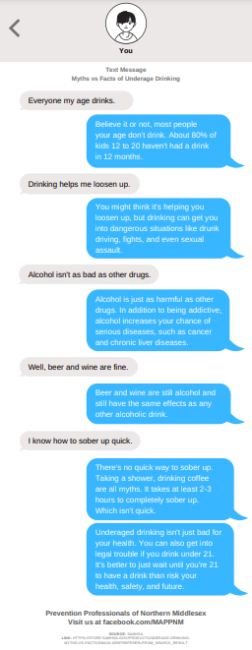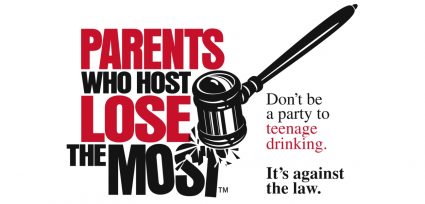Consumption of alcohol by those under the age of 21 is a public health concern. According to the Center for Disease Control and Prevention (CDC), alcohol is the number one most commonly used drug in the United States. Consuming alcohol under the age of 21 is illegal, yet individuals aged 12- to 20-years-old drink 11% of all alcohol consumed in the United States. On average, underage drinkers consume more drinks per drinking occasion than adult drinkers. In Greater Lowell, alcohol consumption is one of the top three substances of concern for use and misuse by a minor. Read below to learn more about how alcohol effects the teenage brain, risks of underage drinking, and prevention tips for parents.
Alcohol Effects The Teenage Brain
- Alcohol impacts learning and memory
- Alcohol impairs decision making.
- Adults are more likely to develop alcohol dependence if they have their first drink at the age of 14 or younger, as compared to those who waited to have their first drink when they were 21 or older.
- Click HERE to learn more facts about how alcohol impacts the teenage brain from McLean Hospital.
Risks of Underage Drinking
- Alcohol-related car crashes and other unintentional injuries, such as burns, falls, and drowning.
- Suspension or removal from athletic teams.
- Disruption of normal growth and development.
- Unwanted, unplanned, and unprotected sexual activity.
- Misuse of other drugs.
- Death from alcohol poisoning.
- Frequent and heavy use of alcohol is associated with low self-esteem, depression, and anxiety.
- Legal problems, such as arrest for driving or physically hurting someone while drunk. Click HERE to learn more about the Registry of Motor Vehicles’ policies related to alcohol suspensions/revocations for individuals under the age of 21.
- Click HERE to learn more about the risks of underage drinking.
Know the Stats (USA)
- The CDC reports that 93,000 people die from excessive alcohol in the United States each year. Of that, more than 4,300 people are below the age of 21.
- After all states adopted a mandatory legal drinking age of 21, drinking during the previous month among persons aged 18 to 20 years declined from 59% in 1985 to 40% in 1991.
- In 2018, 7.1 million young people ages 12–20 reported that they drank alcohol beyond “just a few sips” in the past month.
- More than 90% of the alcohol consumed by those under age 21 is consumed by binge drinkers (defined as 5 or more drinks per occasion for boys; 4 or more drinks per occasion for girls).
- In 2019, the Monitoring the Future Survey reported that 8% of 8th graders and 30% of 12th graders consumed alcohol during the past 30 days, and 4% of 8th graders and 14% of 12th graders binge drank during the past two weeks.
- For more statistics, check out the CDC and National Institute on Alcohol Abuse and Alcoholism.
Prevention Tips for Parents
- Talk openly with your child about alcohol, including risk factors, the laws, and parental expectations.
- Set clear rules and enforce them consistently.
- Be a positive role model. If you consume alcohol and/or have it in the home, implementing a “do as I say, not as I do” rule may not be enough to keep your child from consuming alcohol.
- Create a plan with your child about what to do if they find themselves in a risky situation.
- Know the who, what, where, and when of your child’s plan. Set the expectation that they will provide you with this information when they go out.
- Do not assume that other parents/guardians have the same rules as you; talk with the parents/guardians of your child’s friends about your rules.
- Learn about the Social Host Law. A social host is anyone (adult or minor) who is in control of the premises and who furnishes alcohol or allows it to be consumed on those premises. It is illegal for a parent/guardian to allow their child’s underage guests to consume alcohol in their home. This includes rented and owned properties/dwellings, as well as hotel room. Familiarize yourself with the “Parents Who Host Lose The Most” campaign: Know-PT-May-2-Parents-Who-Host.
Free Resources
Looking for free educational resources? Check out the Mass Clearing House and SAMHSA’s Store.



